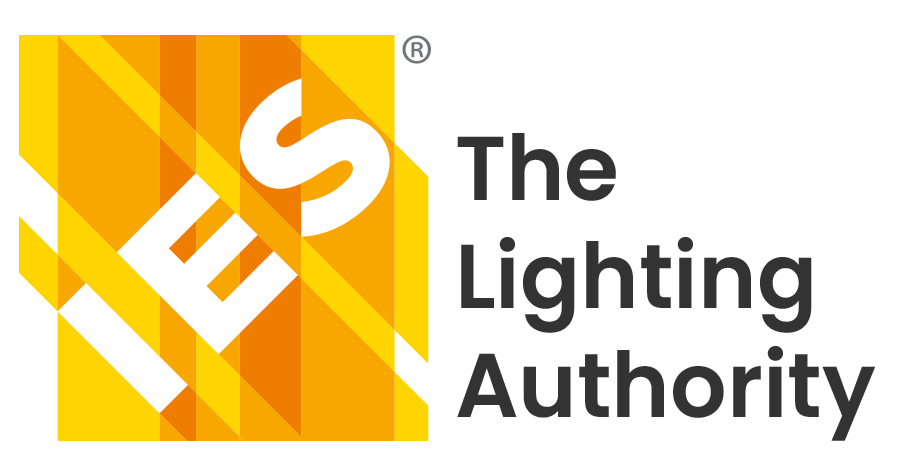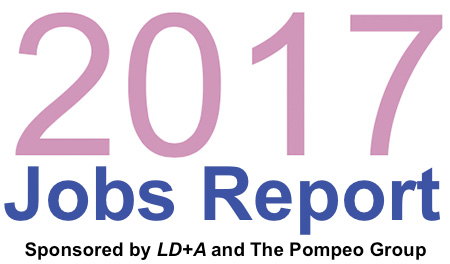 The “2017 Jobs Report & Survey” is the first of what we hope will be an annual snapshot of the state of hiring in the profession. The survey was conducted online via Survey Monkey and e-mailed to IES Members and others in the lighting industry who influence or are responsible for hiring decisions. Job titles selected for the survey included CEO, chairman, partner, principal, president, vice president, director and manager. LD+A received more than 500 responses to the survey.
The “2017 Jobs Report & Survey” is the first of what we hope will be an annual snapshot of the state of hiring in the profession. The survey was conducted online via Survey Monkey and e-mailed to IES Members and others in the lighting industry who influence or are responsible for hiring decisions. Job titles selected for the survey included CEO, chairman, partner, principal, president, vice president, director and manager. LD+A received more than 500 responses to the survey.
Survey questions were divided into three sections that addressed the current job market; technical and non-technical skills; and geographical considerations. Among the key findings:
- The industry appears poised for growth in hiring. More than 60 percent say it’s “somewhat or extremely likely” they will add engineering/product development and lighting design staff in 2017. Slightly more than half (52 percent) say they will add sales staff.
- Despite the demand for candidates, nearly half (49 percent) expect no change in difficulty when recruiting.
- Most jobs to be filled (60 percent) will be entry- or junior-level positions, as opposed to mid-career or senior level.
- When attracting or retaining talent, the survey found that money still talks. “Performance incentives” ranked number one, albeit just barely.
- “Smart lighting” and “IoT” are increasingly popular industry buzzwords, and while respondents say their companies understand what customers could potentially need, a plurality (46 percent) have not factored experience in smart lighting/IoT into their hiring decisions.

We asked survey respondents to indicate the perks their companies offer to recruit and retain talent (see chart at left). Respondents also mentioned the following, ranging from better benefits to—believe it or not—an air-conditioned office:
- Training and growth opportunities
- Flextime
- Air conditioning
- IoT is attracting those who want to grow in their careers and want to evolve. It’s not hard to attract talent
- 401k matching
- Opened a SF Bay Area office where there are more qualified candidates
- Treat staff exceptionally well
- Implementing the WELL Building Standard in our new office
- Better health plan
- Unlimited personal time off
- Employee ownership is a great way to keep the best talent. We are 100 percent employee owned
- We took everyone on a company cruise
- Career development; support for industry engagement
- Align the personal development with company’s vision
- Profit sharing
- Change in company culture; more events
- Work/life balance focus with young and vibrant culture and horizontal management
- Celebrating longevity
- Alternative workweek: longer work day by one hour, and then every other Friday is off


Panelists Size up ’17
By Paul Pompeo
I’m excited about our fourth annual LD+A Jobs Outlook Forum, which focuses on the job market in lighting for the year ahead. One of our strongest panels yet, this year’s group includes Lance Bennett (vice president, specification sales, Eaton); Ken Hawley (vice president of sales, Green Creative); Carol Jones (senior director/lighting relations, Enlighted); Randy Reid (editor/publisher, EdisonReport) and Suzan Tillotson (president, Tillotson Design Associates). Their take on 2017 follows.
What do you see as the most in-demand positions in 2017?
Bennett: [First], lighting and controls experts—people who are familiar with evolving energy codes and possess a good understanding of lighting and fundamental understanding of various control protocols, and the pros and cons of each. [Second], commissioning agents/engineers. More and more spaces require systems that in the short term entail commissioning. [Third], project management for lighting systems that require coordination and compatibility from the same or different vendors.
Hawley: Customer-facing positions that bridge the gap between the customer, the application need and the product. These positions—lighting designer, sales engineer, account executive, product manager— will all have the same fundamental objective. In today’s world of competing LED products with varying differences in lumens per watt, wattage and CRI, there’s a need for someone to help the customer differentiate between these choices and help them get to the correct solution given their specific needs for that application.
Reid: I see in-demand positions having to deal with controls, whether it is IT or IoT experts writing software, or engineers going to the market to commission the systems.
Tillotson: [Lighting design] firms will be looking for entry level candidates with lighting and architecture degrees, good software skills, as well as lighting designers with three-to-four years’ experience. Also, candidates with knowledge in the very newest version of software, for example Revit.
What positions will be less in demand in 2017?
Reid: Most companies are increasing their sourcing from Asia, and there will be less demand for positions dealing with the actual manufacture of luminaires or light sources. Positions for assembly people, buyers and supervisors all will be reduced. Although there will be a new administration in Washington that wants to bring manufacturing back to the U.S., I think it will take years to see this shift begin to reverse.
Bennett: Ball bearing experts. Sorry, bad joke reference from Fletch. Seriously, experts in only certain areas—for example just a fluorescent or HID ballast expert. I think the growing number of lighting options is creating a demand for people who understand the big picture and the need to solve complex problems with simple, elegant solutions.
Hawley: The classical engineering and product management groups that have existed over the years. These two groups have already been fundamentally changed by the speed at which lighting technologies are being introduced into the market with revisions rolling out in months instead of years.
Jones: Paul, I’m genuinely bonking on this question. Our industry is growing so incredibly fast that I’m having trouble finding a good answer about what positions are in decline. My focus has always been forward-looking. Lighting equipment is becoming more solid-state, electronic and integrated, so I suppose I would say that positions related to manufacturing and production of components will continue to decline, such as lamps, ballasts and the like.
What “soft” skills will be most sought after?
Hawley: The one that’s always in demand is the ability to effectively communicate—in all forms. We communicate today via e-mail, text, Twitter, LinkedIn and verbally. The ability to effectively communicate across all of the platforms will continue to be critical.
Tillotson: Project management, good communication and organizational skills, as well as good judgement.
Reid: People skills will be more important than ever. Millennials expect a kinder and gentler work atmosphere. The “dictator” type of boss is dying out and being replaced by people-oriented leaders. Young people today expect more of a collaborative approach.
Bennett: The person that understands the control options, who doesn’t need to explain it in nuts-and-bolts detail, but can explain it in a way to describe how it solves the problem.
Jones: Interpersonal skills, personal initiative and creative problem-solving will differentiate young workers from each other; the prevalence of devices in the younger generation has not provided the kind of real-life training needed for team success. In a severely disrupted industry, it’s increasingly necessary to know how to plan and where to invest. Data acquisition and analytics necessary for decision-making will be sought after.
Will we see the profile of lighting organizations change, and if so, how?
Bennett: Moving forward, it will be companies that embrace the next generation of lighting as the backbone of a new wireless or wired mesh data network for the enablement of smart buildings, smart homes and smart cities that succeed.
Hawley: It is already happening; lighting organizations are more and more focused on total lighting solutions. Lamps, luminaires, drivers, controls and even labor are all being bundled today by lighting companies to provide a total solution for the customer. The lighting companies of the future will be more holistic in the products and services that they deliver.
Reid: Yes, I suspect, and hope, that we are going to see IES increase its relevance. With top executives from leading lighting manufacturers being elected to the highest levels of IES leadership coupled with a new and re-energized support staff, I see the Society playing a bigger role, with more influence. [In addition], as utility rebates become less important, I would expect the DesignLights Consortium will play a lesser role, which should increase speed to market and help the adoption rate of new technologies.
Tillotson: Due to the increased cost of LED lighting equipment, our liability has increased. Small, independent lighting design firms can no longer afford the insurance required to cover the costs should they make a huge error. Their annual revenues only allow so much to be spent on professional liability insurance. If they sell equipment and operate more like a contractor, perhaps they can lower risk and improve their profits.
Jones: Every day in this country, 10,000 people turn 21. The incoming workforce is tech savvy and will increasingly transform the historically commoditized and traditional lighting industry at all levels, including sales channels. Partnerships will emerge across different disciplines to close gaps, and we will start to see the emergence of Lighting as a Service.






